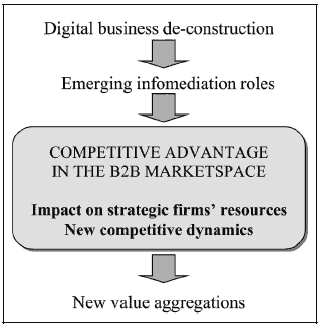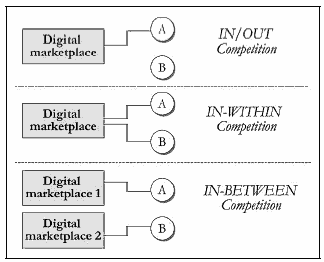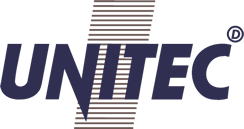Inside
New thesis on the Unitec case introduced near the University Bocconi of Milan rewarded with the best note.

Graduand
Andrea Ordanini
Annalisa Pol
Infomediation and Competitive Advantage in B2b Digital Marketplaces
Summary
Linking Digital Platforms to Competitive Advantage in B2b Markets
The spread of the Internet has led to several changes in business organisation and company strategy.
By providing a wide range of opportunities linked to digital platforms, companies can now de-construct traditional vertical value chains and convert them into more flexible and synchronic value aggregations.
Electronic commerce is the main driving force behind this transformation since companies can now carry out transactions in goods, services and information in digital form. In this sense, online business-to-business relations play a central role in changing the structure of vertical value chains.
Since b2b transactions are much more complex than those involving the final consumer, b2b e-commerce develops in a more complex scenario.1
For instance, infomediaries are needed to reorganise b2b networks because, unlike what occurs in the b2c environment, companies are unable to directly exploit the benefit of e-commerce on their own.2
New categories of intermediaries (trading hubs, auctioneers, vortals, …..) are now emerging in the b2b environment and creating marketspaces where supply and demand might match by using organised virtual platforms.3
Apart from several reports and research studies on this topic, there has been little meaningful debate regarding the driving forces behind these changes.
The de-construction of businesses, the spread of infomediation roles and the creation of new b2b marketspaces are only in part a technological phenomenon since they emerge as companies explore and find new and better ways to establish business relations.4
In our opinion, what drives the transformation of old vertical value chains into new b2b marketspaces is a profound impact on competitiveness (see Figure 1).
First, infomediaries provide digital services with a widerspread effect on the strategic resources that heighten the competitive advantage of companies.
Identifying this effect and understanding the possible new mechanisms required to build strategic resources are central to managing companies in b2b marketspaces.
Figure 1 The Pivotal Role of Competitive Advantage in the B2B Marketspace Dynamics
Second, as this influence on company resources ultimately determines the competitive selection of infomediaries, the rules of the game in b2b marketspaces are profoundly affected: a kind of co-evolution in competition seems to appear and re-design new value aggregations.
Competitive advantage plays a pivotal role in explaining how digital platforms affect new value aggregations and this is the subject of this article.
We subsequently highlight the driving forces behind business de-construction: the changing attributes of digital information.
Traditional logistics (organising the physical flow of goods and services) and cognitive activities (information flow management) can be reorganised in many different ways.
In the b2b environment this requires new operators to act as strategic links to integrate physical and virtual processes.
Since companies might not exploit the benefits of b2b electronic commerce on their own, the functions of infomediation services must be carefully considered.
The roles played by infomediaries in b2b aggregation and facilitation may influence firms’ competitive advantage.
First, there is an impact on the stock of resources that supports the competitive advantage of user firms.
We provide a model that identifies the three resource networks involved namely, logistics, transaction and knowledge.
Second, the competitive dynamics are affected at the macro level: co-evolution is re-defining and re-organising the traditional value chain into new aggregations thus changing the nature of competition.
In the final section, three European cases highlight the link between infomediation and competitive advantage: a provider of logistic solutions (Unitec), a vertical exchange of metal products (Steelscreen) and a horizontal portal for SMEs (Marketplaceitaly).
Note 1: On differences between b2c and b2b e-commerce see the analysis of William Blair (1999).
Note 2: On the concept of Infomediary, see Hagel and Singer(1999). For a discussion on a new ‘middle role’, see Vandermerwe (1999).
Note 3: For taxonomies of b2b hubs, see Kaplan and Sawhney(2000) and Wise and Morrison (2000).
Note 4: The existence of a technological capability dimension and a strategic business dimension in the marketspace model has been underlined by Dutta and Segev (1999).
Information Resources and Value-Chain De-Construction
The main driver behind this transformation is the availability of technological platforms that modify the main attributes of information.5
Over the past few years, significant, new opportunities in emerging technologies have changed the use of information assets: digitalisation separates the information flow from the physical one in the traditional supply chain, a phenomenon that is generally called ‘business de-construction’.6
Information is detachable from its source in that it can be re-used, stocked and distributed.
For example, a company operating in a b2b digital marketplace can publish its catalogue on the Internet and make it available online, separating price information and selling conditions from the source that has generated them.
Information changes its specificity features, that is the number of individuals who benefit from its delivery.
In the above-mentioned example, the electronic catalogue is available to all those sharing the same digital standard, with no physical constraint.
Digitalisation also alters information plasticity since its original contents can be changed, modified, and shaped in the virtual environment.
For example, the product specifications published in an electronic catalogue can be easily modified and adapted to match customer needs.
One of the most important effects of these changes is removing the trade-off between information width, namely the number of individuals who benefit from it, and information depth, namely the richness of the message in a communication relationship.7
In the past, the main obstacle to sharing knowledge was the band restriction.
Only simple and codified information could be transferred and shared by many people.
Complex information flows and specific knowledge sharing were limited to closed environments.
In a digital marketplace, a machine tool producer can offer his products to a broader range of potential buyers than in an offline market. A buyer searching for a specific component can compare different product offers before making his final choice; the only problem is having companies with the same digital standards.
New technologies, which separate information flows from physical goods and services, eliminate this traditional trade-off in the information economy.
While the sales stock of a commercial distributor is limited by logistic restrictions, an online commercial intermediary can extend its product offering since he has no logistic boundaries.
The competitive pressure that many industries are now facing is a clear sign that the characteristics of information are changing.
The typical activities of the supply chains are now taking on original, new forms in the transaction processes.
Just as traditional value chains were linear, rigid and sequential, new value aggregations will become complex, flexible and synchronic.8
In this process, the role of infomediation services is crucial since they provide the efficient re-organisation of information in new value aggregations which is too expensive and complex to carry out and manage alone.
These services in the b2b environment will be the drivers of change and not only the enablers, and will become the strategic links in defining and constituting new value aggregations.
Note 5: On digital information features, see the in-depth analysis by Sampler (1998).
Note 6: In the traditional value chain the two flows partly overlapped since most of the information value was incorporated in the traded product and services. See Evans and Wurster (1997).
Note 7: For the analysis of digital information trade-off, see Evans and Wurster (1997, 1999).
Note 8: See the theoretical analysis of Ramirez (1999).
Infomediation in B2b Marketspaces
As stated earlier, infomediation services allow firms to exploit the benefits of electronic commerce in the b2b environment by providing new ways to organise physical and virtual processes.
The basic role of infomediaries is to act as aggregator and facilitator (see Figure 2).
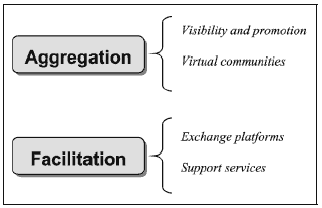
Figure 2 Service Functions in B2B Markets
As aggregators, they bring a group of dispersed trading partners together into a virtual marketplace.
In this sense, they provide electronic storefronts that permit firms to promote their online activities, obtain high visibility, and build virtual communities where companies can have access to news, analysis, buyers and sellers’ guides and interactive resources.
As facilitators, infomediaries provide software, tools and services enabling traders to run business electronically.
In this case, they provide exchange platforms (such as electronic catalogues, RFQs and RFPs, bids and auctions) that can digitally carry out the transactions.
In addition, they also provide logistics and financial services to manage the transaction processes.
The development of b2b markets is giving rise to a wide variety of business models, which combine the aggregation and original ways.
As we see in Figure 3, b2b infomediaries may be classified according to three dimensions: the relation structure, the degree of diversification, and the transaction operating mechanisms.
Based on the relational attitude, the infomediary can be biased or unbiased.
If he is unbiased, the third party providing services is equidistant from the market participants; if he is biased, the intermediary acts in the interest of one of the two counterparts.
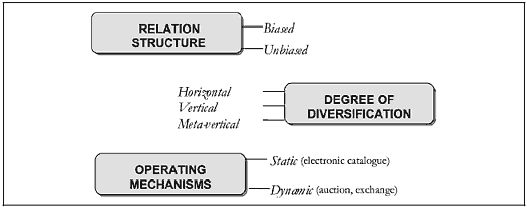
Figure 3 A Model of Classification of B2B Intermediaries
For example, Metalsite.com is a neutral operator that provides a virtual space for metal transactions.
On the contrary, Chemdex.com and Ingrammicro.com are two biased operators: the former aggregates the demand in the chemicals industry whereas the latter aggregates the offers in the PC industry.
Market fragmentation profoundly influences the choice between these two models.
When it is bilateral, a neutral operator is probably the best way to improve transaction efficiency.
However, if the market is fragmented only on one side, digital services often take the form of an asymmetrical infomediation. According to the diversification, infomediaries can be horizontal, vertical and meta-vertical.
The differences lie in the number and characteristics of the users reached.
Horizontal hubs normally address inefficiencies common to multiple supply chains.
They normally focus on a process or service, or involve the trade of indirect inputs (goods and services used in peripheral maintenance, repair and operation, such as machines, computers, and maintenance activities).
Companies from all industries can potentially benefit from this kind of offer.
IMark.com, in the e-recruiting industry, Advexpress.it, in the advertising business and Machinetools.com, in the equipment industry, are examples of these types of infomediaries.
For these hubs, the service delivered is closely connected to the digital platform and covers many phases of the procurement process.
Vertical marketplaces usually trade direct inputs (products and services directly incorporated in the production process) and focus on inefficiencies that exist across a supply chain in a specific industry.
Examples of vertical European marketplaces are Allplastx.com, in the plastics sector, Steelscreen.com in the metal industry and Marbleandmore.com in the marble industry.
In these trading models the digital platform is often enhanced by additional services in order to match industry-specific needs.
Meta-vertical portals aggregate various vertical marketplaces in one site, by taking advantage of different sets of services that can be concentrated and delivered to companies from different sectors.
Marketplaceitaly. com is a b2b trading portal which targets SMEs. Verticalnet.com leverages its well-established digital brand to differentiate and offer the same trading platform to many vertical markets.
Finally, an important distinction should be made with regard to operating mechanisms.
The catalogue trading model electronically aggregates, standardises and indexes different catalogues or buyer requests.
Transactions take place after the customer has navigated the system and chosen the best offer among those given.
In this operating model, prices are fixed and negotiated in advance, and it is impossible to make the exchange more dynamic.
Fob.com is an example of aggregation in the chemicals industry.
The auction is a dynamic system with a one-to-many trading model: a counterpart posts a selling (auction) or buying (reverse auction) request on the marketplace and defines the expiry term of the transaction.
The main feature of this mechanism is a price adjustment process in a time-scheduled transaction scheme.
ESteel.com provides a b2b auction platform in the steel industry.
A different version of dynamic price mechanisms occurs in the exchange model.
In this system, the transaction occurs in real time according to a manyto- many scheme in which the counterpart often remains anonymous.
In this model, buyers and sellers compete simultaneously for exchanges, with no time restriction.
Actors are allowed to participate repeatedly like buyers or sellers since the products are commodities.
For example, Altraenergy.com offers this kind of service in the energy industry and Arbinet.com in telecommunications.
Since these infomediation services can be widely applied, it is possible to redesign the structure of the value chain.
The search for competitive advantage is behind this change.
Infomediation and Competitive Advantage: the Impact on Strategic Company Resources
In the previous section we focused on the role and contents of infomediation services in b2b digital marketplaces. We shall now focus on how service delivery affects a company’s competitive advantage.
According to resource-based theory,9 the source of a company’s competitive advantage lies in the bundle of resources (tangible, intangible and human) that the company can control.
In this sense, postulating the competitive impact of infomediation services means identifying the strategic resources involved and assessing their impact.
We present a model that illustrates how infomediation services affect a company’s competitive advantage and its three resource networks (see Figure 4):
- Logistic resources include managing all the complementary transaction processes (ordering, procurement, transportation, stockage, assurance, settlement, accounting, ….)
- These resources mainly influence process costs and logistic services (quality, speed and delivery reliability);
- Transaction resources related to reducing information asymmetry. This involves both the business opportunities linked to a potentially broad transaction market and the definition of a more transparent exchange context with an impact on trust resources;
- Knowledge resources which refer to the cognitive dimension of the impact. In this sense, marketplace participants can share experiences more easily and explore new business opportunities, thereby greatly increasing their firm-specific knowledge assets.
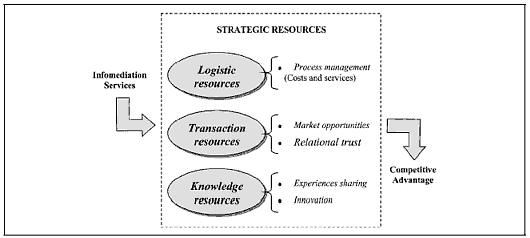
Figure 4 Infomediation Impact on Company Strategic Resources
Let us now analyse in greater detail the impact of these three services.
First, the activities of infomediaries have a great impact on logistic resources. Since in digital marketplaces companies basically exchange information flows, infomediaries usually have to develop a complex, multi-faceted partnership with different logistic operators in order to supply services that can lower procurement costs.
The explosive growth of b2b is mainly due to the cost saving derived from outsourcing most of the supply chain activities.
Goldman Sachs (1999) estimates that b2b solutions enable companies to decrease the unit cost of a single procurement process from 10 to 25 per cent.
Moreover, much more time is spent on order processing activities than on looking for new solutions.
B2b services allow companies to streamline the procurement process and employ human resources on more value-added activities. Improved stock management and procurement and transport efficiencies can also increase delivery speed, production flexibility and reduce lead times and timeto- market.
Logistic resources can be improved both in quantitative and qualitative dimensions (costs and service).
The central point is to properly integrate online and offline processes both outside and inside the company.
The impact of infomediation on logistic resources differs from one industry to the next according to the particular value chain.
Such impact depends on the cost structure, off-line intermediaries and inefficiencies in the supply chain.
Both buyers and sellers can benefit from the positive impact on logistic resources since sub-efficient transaction processes can be outsourced.
However, at the present time, the positive impact on procurement is greater than on potential supplier benefits.
In several markets, efficiency recovery in the value chain is needed more upstream than downstream.
This is why these solutions are now mainly buyer-driven. The second area involves transaction resources.
B2b digital marketplaces play an important role in increasing the transparency of price and product information, and can significantly affect competition.
Digital technologies lower the marginal cost of finding new counterparts and transactions can be made by means of a broader and more efficient comparison of potential partners.
Companies can access a wider range of business opportunities if they operate in a digital marketplace.
Interacting with a large number of potential counterparts reduces transaction costs and allows companies to enhance their businesses.
In particular, sellers benefit from improved exploitation of production capacity and lower stocks, especially in auctions.
In many markets, the demand is extremely fragmented and intermediated by several trade channels.
There are potential buyers that suppliers never reach, and transactions that would otherwise not be made outside these marketplaces.
On the other side, buyers may promote price competition among sellers and explore a broader supply base in order to improve the procurement process. In addition to expanding market opportunities, infomediation services strongly influence trust and other relational resources.
Price and product transparency reduces information asymmetry, opportunism and adverse selection phenomenon.
In digital marketplaces, the contractual power between buyers and sellers is altered. Services such as supplier information, customer rating and tracking past transactions reduce the asymmetry and the complexity of markets, and increase efficiencies in the transaction process.10
In a sample of large US companies, Goldman Sachs found that the average number of purchases made under adverse selection conditions is between 30 and 40 per cent.
This means that for those transactions there was at least one better exchange opportunity of finding another supplier.
By using software tools like price bot or search engines to compare offers, such problems of adverse selection could be considerably reduced.
The competitive effect on transaction costs is extremely widespread since direct and indirect purchase costs account for over 50 per cent of the company’s total costs.
This positive influence is closely connected to the trading platform mechanism. For instance, in an efficient auction system, the reduction of transaction costs transfers the surplus from participants to the auctioneer.
On the contrary, if the mechanism is inefficient, low competition on the demand side redistributes the surplus among the participants.
The influence on trust resources is not only related to exchange platforms, but new relations and partnerships may be enhanced through virtual communities, where firms may improve their mutual knowledge on projects and strategies.
The third area involves knowledge assets. In this case, the impact occurs on a more cognitive level and, although less evident, it is often strategic in heightening the competitive advantage, given the widespread role played by these resources.
Companies joining a digital marketplace may benefit from the knowledge-sharing circle,11 in which codified information circulating in b2b digital markets is integrated with firm-specific knowledge thus improving strategic assets.
For instance, a virtual forum permits firms to absorb experiences from other participants and add to their previous body of knowledge.
This is particularly important for SMEs that are usually excluded from these opportunities of knowledge absorption.
Joining b2b hubs does not merely mean absorbing the experience of other companies.
Firm-specific knowledge resources closely interact with a wide body of codified knowledge spread in the digital marketplace.
This continuous interaction is a typical mechanism that creates specific new knowledge able to support experimentation, simulations and innovations in a broad sense.
For example, a machine tools producer in the textile industry might meet a yarn producer who is developing a new product concept.
This might lead the machine tools producer to invent a new mechanical method to manufacture yarn, thus giving impetus to further innovations.
The impact of b2b services on knowledge resources is one aspect which, although less explored, is probably more important in understanding the competitive influence in b2b markets.
Repeating experiences and building new knowledge assets are powerful drivers in redesigning the competitive capabilities of companies.
Note 9: For an insightful synthesis of Resource-Based Theory, see contributions by Peteraf (1993) and, more recently, the Special Issue of Strategic Management Journal edited by Helfat (2000).
Note 10: Trust and loyalty on the virtual environment have been recently analysed by Reichheld and Schefter (2000) and by Sinha (2000).
Note 11: On knowledge-creation mechanisms, see Nonaka and Takeuchi (1995).
Competitive Co-Evolution Phenomenon in B2b Digital Markets
As mentioned earlier, infomediation services in b2b digital markets can profoundly affect the competitive advantage of companies: enabler and facilitator functions played in marketspaces modify mechanisms by building networks of strategic resources.
Logistic, relational and cognitive processes are profoundly affected by infomediation services, but these changes do not only involve the competitive process of participating firms.
Since they pervasively impact on value aggregations, the competitiveness of infomediaries is also affected.
The process of competitive selection, led by the adoption of b2b digital services, takes place at different levels (see Figure 5).
Figure 5 Different Levels of Competitive Selection, Through Infomediation, in B2B Digital Markets
Companies in the same business face a first level of competitive selection whether they participate or not in a virtual marketplace.
This process is called inout competition. The use of digital services changes the established competitive balance of the market, differentiating the offer among companies that join digital marketplaces from those that do not.
On a second level, companies participating in the same marketplace can obtain different competitive impacts according to their degree of integration in online and offline activities.
The in-within level of competition among firms in a digital marketplace depends on the consistency and fit between services delivered by the infomediaries and the company-specific resources and objectives.
A third level of competition, called in-between competition, can also take place between companies that participate in different marketplaces.
For example, two companies which operate under the same conditions in two different marketplaces and benefit from two different sets of services will probably gain different competitive advantages.
This last level of selection shifts attention to another dimension that directly concerns infomediaries.
If their services influence the competitive advantage of user companies, this enhancing capability also becomes the principal driver of their own competitiveness.
In fact, a company probably decides to participate in a digital marketplace on the basis of the services it delivers.
This means that an infomediary in b2b digital markets will gain a competitive advantage only when participants benefit from the services it delivers.
The capability of an infomediary to compete horizontally against its competitors is structurally linked to its capacity to enhance user company competitiveness.
This phenomenon of competitive co-evolution, enhanced by digital platform features, links the competitive dynamics of both service suppliers and users in b2b digital marketplaces, thereby designing different co-evolution paths.
In this sense, digital marketplaces tend to evolve in relation to the competitive effects it generates through service delivery.
During the early stages of evolution, infomediaries face scarce liquidity in digital markets that represent only a secondary source for company exchanges.
To break down company entry barriers, market makers generally choose to provide transaction-enabling services like order matching, catalogue searching, and aggregation of orders that improve visibility and logistic management.
In this way they try to attract new companies.
When new participants join the virtual environment and the marketplace reaches critical mass, market liquidity increases and participants benefit not only from visibility and logistic services but also from the positive impact on trust resources.
In this phase, infomediaries organise primary markets for many companies.
At the stage of maximum growth, virtual trading communities represent the only market for a large number of participants.
The new challenge market makers now have to face is retaining users rather than finding new ones.
Companies that manage marketplaces need to construct a complex system of networking in order to activate that virtuous circle of knowledge creation described above.
To sum up, providing digital services in b2b marketplaces does not only mean managing the delivery of a complex set of activities but also having a profound influence on the competitive dynamics of businesses.
This area of research will probably attract the attention of academic and business communities in the near future.
Some Evidence of Infomediation Competitive Roles in European Digital Markets
Case 1 — Unitec and E-Procurement Outsourcing
Unitec is an outsourcing supplier specialising in supply chain management and logistics.
Founded about 12 years ago as a traditional supplier in the automotive industry, it became a full Internet service provider in the procurement process in 1997.
The company has two offices in Europe, one in Augsburg, Germany, the other in Sabaudia, Italy.
Its turnover was over 5 million Euros in 1999. Unitec digital platform aggregates catalogues from multiple suppliers in order to provide a one-stop shopping site for buyers and a low-cost distribution channel for suppliers.
The software application allows buyers to search a database of more than 44,000 items from over 3000 firms and purchase orders in real time. For non-strategic, low-cost purchasing, cost reductions are evident.
By automating procurement activities, companies streamline internal processes and speed up the order and delivery of goods thus reducing the amount of stock they carry.
Although these services reduce the labour requirements for printing, mailing, faxing and manually entering business documents, such as purchase orders and invoices, the most significant savings are a reduction in data entry errors.
Moreover, by transforming the least profitable (but proportionally more expensive) part of the internal process into services purchased on the market, companies increase process and inventory efficiency by immediately transforming fixed costs into variable ones.
At the same time, outsourcing enables purchasing professionals to spend more time on value-added, strategic work rather than on manual operational processes.
The aggregation on the procurement side allows buyers to aggregate purchases in order to negotiate better exchange conditions due to volume discounts.
Small clients, who once had to run small orders with retailers, can now add their orders to the larger ones thus reaching wholesale counterparts without duplicate processes and warehouses for the same items.
The logistic flow also benefits from an integrated supply. Arrivals can be arranged so that the acceptance of goods may occur in a planned way rather than in fragmented orders (a typical customer has 10,000 or more suppliers).
Warehousing operations are aggregated and accelerated, thereby reducing delivery documentation to a minimum.
As soon as the logistic flow is under control, there is also a sharp reduction in transportation costs.
One of Unitec’s innovative ideas is the ‘virtual warehouse’, a value-added service that divides trend risks between many firms.
Companies in the same market or from different industries often sell similar products or involve the same items in their manufacturing processes.
The software provides an electronic multi-client and multi-product virtual warehouse.
By putting together products and making them available to companies, the amount of stock can be reduced.
If demand unexpectedly grows, requests can be satisfied by accessing other companies’ stock, thus avoiding costs related to over-stocked warehouses.
Case 2 — Steelscreen and the Exchange Digital Marketplace
Steelscreen is the first portal for exchanges between companies in the steel industry, which specifically target the European market.
Founded in Sweden in June 1999, the vertical portal immediately had a positive response.
In the first six months, more than 700 operators registered to sell or buy metal products. Up to now transaction volumes have reached 2.3 million Euros.
Compared to other competitors (Metalsite.com, ESteel. com,…), the goal of this marketplace is to target their services to the European market in order to maintain strong relations. Steelscreen has offices in six European countries (headquarters are based in Sweden, but offices have recently opened in Barcelona, Milan, London, Paris and Duisburg).
There is hardly any information on metal industry sites. Due to costs related to product sales, marketing and distribution, demand often has to face high search costs. Furthermore, there is often demand that suppliers know nothing about.
A digital marketplace enables suppliers to reach all of these potential customers at a lower cost than traditional channels thus accelerating and increasing search efficiency.
It is quite simple to participate in this market and the operating mechanism is similar to that of vertical communities. The buyer makes his request and the software immediately selects suitable sellers according to quantity, quality and price of their offer.
The system automatically provides a list of potential sellers and once the choice has been made, goods are delivered and payment made according to traditional procedures.
Buyers can expand their business opportunities and the rapid comparison and selection of the best offers lowers transaction costs. Because of these opportunities, buyers can freely participate in the marketplace but suppliers must pay a fee proportional to the transaction value.
Even if a digital trading intermediary can potentially bring efficiency to almost every conceivable industry, each business will have its own existing inefficiencies that are the most open to attack.
The steel industry is a typical scale industry with a high manufacturing process standardisation, but extremely complex individual interactions.
Even if the steel is a commodity, product customisation in terms of size, width, length, shape and thickness requires significant information exchanges at certain stages of the supply chain.
Rigidities in the production capacity of companies at the beginning of the value chain limit complete plant exploitation and lead to cost pressure in the channel.
High fragmentation at different stages across the steel supply chain also multiplies the risk of channel inefficiency. Steelscreen provides a central location for interaction that helps establish rapid connections in the industry.
Networking opportunities at different stages in the value chain can reduce bottlenecks in supply processes and enable producers to find alternative buyers.
Moreover, a previously inefficient supply chain can bring gains by bypassing traditional intermediaries and automating processes.
By collecting and organising hard-to-find information, the infomediary acts as a gateway to centralise, organise and deliver the right information to participants, thus certifying the participant’s reliability.
This significantly contributes to decreasing transaction costs, reducing opportunism and adverse selection, and increasing market reach by facilitating many-to-many communications.
This can have a strong impact on the trust resources and relational commitment of e-market participants.
Steelscreen is an independent market player and is neutral in relation to the buying and selling side.
In markets characterised by high fragmentation on both the supply and demand sides, b2b exchanges greatly benefit from a third independent intermediary while company-side solutions are inefficient and less convenient.
Moreover, an independent market maker is especially attractive for SMEs seeking a broader reach and greater visibility since it reduces the impact leader companies have on market mechanisms.
Case 3 — Marketplaceitaly.com and the Virtual Communities
Marketplaceitaly is a multi-community b2b portal, specifically targeted to SMEs. The project was announced in November 1999 and is the result of a partnership between I2I (one of the major US trading communities) and Athos (an Italian strategic consulting company).
Three functional areas are currently operating in Marketplaceitaly.com.
Exchangeitaly is the dynamic trading platform that enables companies to trade through different operational mechanisms.
Classified is a bulletin board in which sellers publish offers and buyers bid; the transaction is made offline.
Auction is a temporal matching of buyers and sellers. Exchanges defines processes for good and service trading.
Buyers and sellers choose to trade in a restricted or expanded market and select a specific geographical area, industrial sector or group of companies as counterparts.
Business Services is the broad area devoted to supplying goods and services to SMEs.
Companies are provided with logistic services to support transactions and many other operational needs such as transportation, insurance, legal and tax consultancy.
Translating, job recruiting and distance learning are other services offered through partnerships with other operators.
Access to these services is free, but a fee is due on every transaction made, in proportion to the amount and depending on the traded product and the sector in which the operation took place.
Business Community is the area that supports different vertical b2b trade communities.
Each community focuses on a single industrial sector or local area and acts as a comprehensive and specific source of information, interaction and electronic commerce.
It can combine product information, proposal requests, discussion forums, e-commerce opportunities, industry news, directories, job listings, and online educational courses.
The main objective is to exploit the interactive features and global reach of the Internet to enable companies to discover new business opportunities.
One of the differences between Marketplaceitaly and other online intermediaries is that it manages a diversified portfolio of vertical communities.
In addition to spreading bids in many markets, this portfolio approach gives management the opportunity to try out a concept in one or several verticals before a portfolio- wide rollout.
With this approach, economies of scale result from sharing technology, marketing, sales, and infrastructure costs across vertical communities thus avoiding the limits of concentration.
Three communities are currently active. Gateitaly is a community of SMEs from industrial districts located in the Italian Northwest areas. Machinetools is the most recent community built around the machine tool industry.
Artigianinet is a portal set up in collaboration with the Association of Artisans which offers a wide range of services to small local firms.
In this sense, new technologies offer SMEs the opportunity to manage their internal relationships more efficiently and broaden their network by benefiting from external knowledge and mixing it with internal knowledge assets.
If previous examples mainly highlighted the impact on logistic and relational resources, Marketplaceitaly demonstrates the potential impact on knowledge resources.
References
Dutta, S. and Segev, A. (1999) Business transformation on the Internet. European Management Journal 17, 5.
Evans, P. and Wurster, T. (1997) Strategy and the new economy of information. Harvard Business Review 75, 2.
Evans, P. and Wurster, T. (1999). Blown to Bits. Kluwer, New York.
Goldman Sachs (1999) B2B e-markets. Internal Report, New York.
Hagel III, J. and Singer, M. (1999). Net Worth. Harvard Business School Press, Boston.
Helfat, C.E. (2000) The evolution of firm capabilities. Strategic Management Journal 21(Special issue), 10–11.
Kaplan, S. and Sawhney, M. (2000) B2B e-commerce hubs. Towards a taxonomy of business models. Harvard Business Review 78, 3.
Nonaka, I. and Takeuchi, H. (1995). The Knowledge-Creating Company. Oxford University Press, New York.
Peteraf, R. (1993) The cornerstones of competitive advantage. Strategic Management Journal 14, 1.
Ramirez, R. (1999) Value co-production: intellectual origins and implications for practice and research. Strategic Management Journal 20, 1.
Reichheld, F.F. and Schefter, P. (2000) E-loyalty: your secret weapon on the web. Harvard Business Review 78, 4.
Sampler, J.L. (1998) Redefining industry structure for the information age. Strategic Management Journal 19, 1.
Sinha, I. (2000) Cost transparency: the net’s real threat to prices and brands. Harvard Business Review 78, 2.
Vandermerwe, S. (1999) The electronic ‘Go-between service provider’: a new ‘middle’ role taking centre stage. European Management Journal 17, 6.
William Blair and Co. (1999) B2B Internet Research. Internal report, Chicago IL.
Wise, R. and Morrison, D. (2000) Beyond the exchange; the future of B2B. Harvard Business Review 78, 6.
Digital platforms are radically transforming the organisational structure of value chains and the way companies organise their business.
Because they are so complex, b2b networks are mainly involved in this process and new infomediaries are emerging to reorganise company relations.
Apart from several articles, there has been little meaningful debate regarding the driving forces behind these changes.
This paper focuses on the competitive role of these new actors, and provides a conceptual framework which aims to show how these new virtual infomediaries are affecting strategic company resources and reshaping the dynamics of competition.




